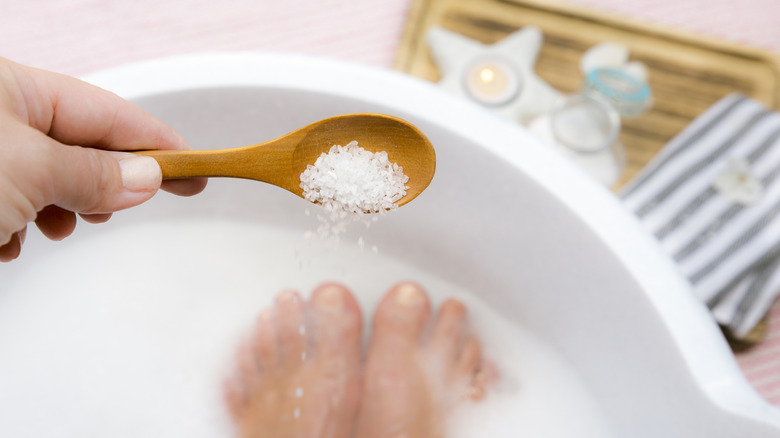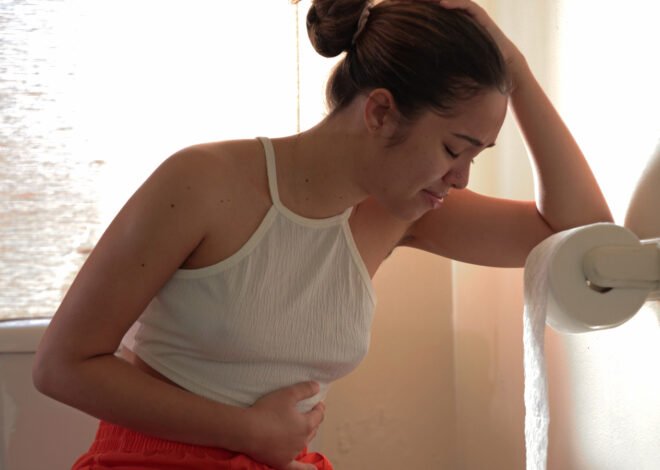
When You Take A Magnesium Bath, This Is What Happens To Your Body – Health Digest
A hot bath can feel like it melts away your stress, especially if you’ve got your favorite essential oils diffusing in the background. After a tough workout, when your muscles are stiff and sore, tossing in a handful of Epsom salts can seem like the perfect fix.
Epsom salts aren’t actually salt at all, even though they dissolve in bathwater like salt. Epsom salts are made with magnesium sulfate. Your body needs magnesium for hundreds of important jobs, like helping your muscles contract, sending signals through your nerves, and even helping you relax. Because many people don’t have enough magnesium in their diet, some people believe that soaking in Epsom salts (or other magnesium solutions) can boost your magnesium levels. Since magnesium is also linked to better sleep and relaxation, it sounds logical to soak in Epsom salts at the end of the day.
While a magnesium bath might feel amazing, it’s not really the magnesium that’s doing the work. A 2017 review in Nutrients found that your skin can’t absorb much magnesium from a bath, whether it’s Epsom salts or magnesium chloride flakes. Some magnesium might sneak in through your hair follicles or sweat glands, but not enough to meaningfully raise your body’s magnesium levels. Still, magnesium baths can be good for your skin.
Magnesium might help heal dry, irritated skin
Older research from the Archives of Dermatological Research tested how different magnesium salts affected the skin of hairless mice. Most magnesium salts helped the skin heal after damage, aside from magnesium bis(dihydrogen phosphate). Magnesium baths may also have calcium, but the ones with more magnesium healed the skin more quickly. However, a bath soak with an equal mix of magnesium chloride and calcium chloride is more effective than magnesium chloride alone. Epsom salts may also make a great foot bath.
And while your standard bag of Epsom salts won’t have minerals from the Dead Sea, using Dead Sea salts rich in magnesium might offer even more skin-soothing benefits. A 2005 study in the International Journal of Dermatology had people with dry, irritated skin soak one forearm in a 5% Dead Sea salt solution and the other in regular tap water for 15 minutes over six weeks. The skin treated with Dead Sea salts was better hydrated, smoother, and less red. Researchers credited the high magnesium content for helping the skin hold onto moisture and repair itself.
Relief from Epsom salts may be about the water temperature
Although soaking in Epsom salts or magnesium chloride may not help with magnesium deficiency, small studies have found that Epsom salts may relieve pain. However, it may be less about the Epsom salts and more about the temperature of the water. A 2023 study in the International Journal of Health Sciences and Research tested Epsom salts with hot and room-temperature water in 60 people with arthritis. Instead of taking full baths, participants applied an Epsom salt solution as a compress over their sore joints for 20 minutes twice a day for 10 days. Those who used hot water compresses reported less pain and better joint movement than those using room-temperature compresses.
A magnesium or Epsom salt bath can definitely feel soothing, but it may not deliver the dramatic results promised by some marketing claims. That said, soaking in magnesium salts is generally safe as long as you don’t have any open wounds or skin infections. Just don’t drink magnesium sulfate unless you’re prepared to spend some time on the toilet. Epsom salts have a serious laxative effect.
If you’re looking to boost your magnesium levels, your best bet is through foods like nuts, legumes, whole grains, and soy products. Supplements are another option, but the National Institutes of Health recommends sticking to no more than 350 milligrams of magnesium from supplements per day.





